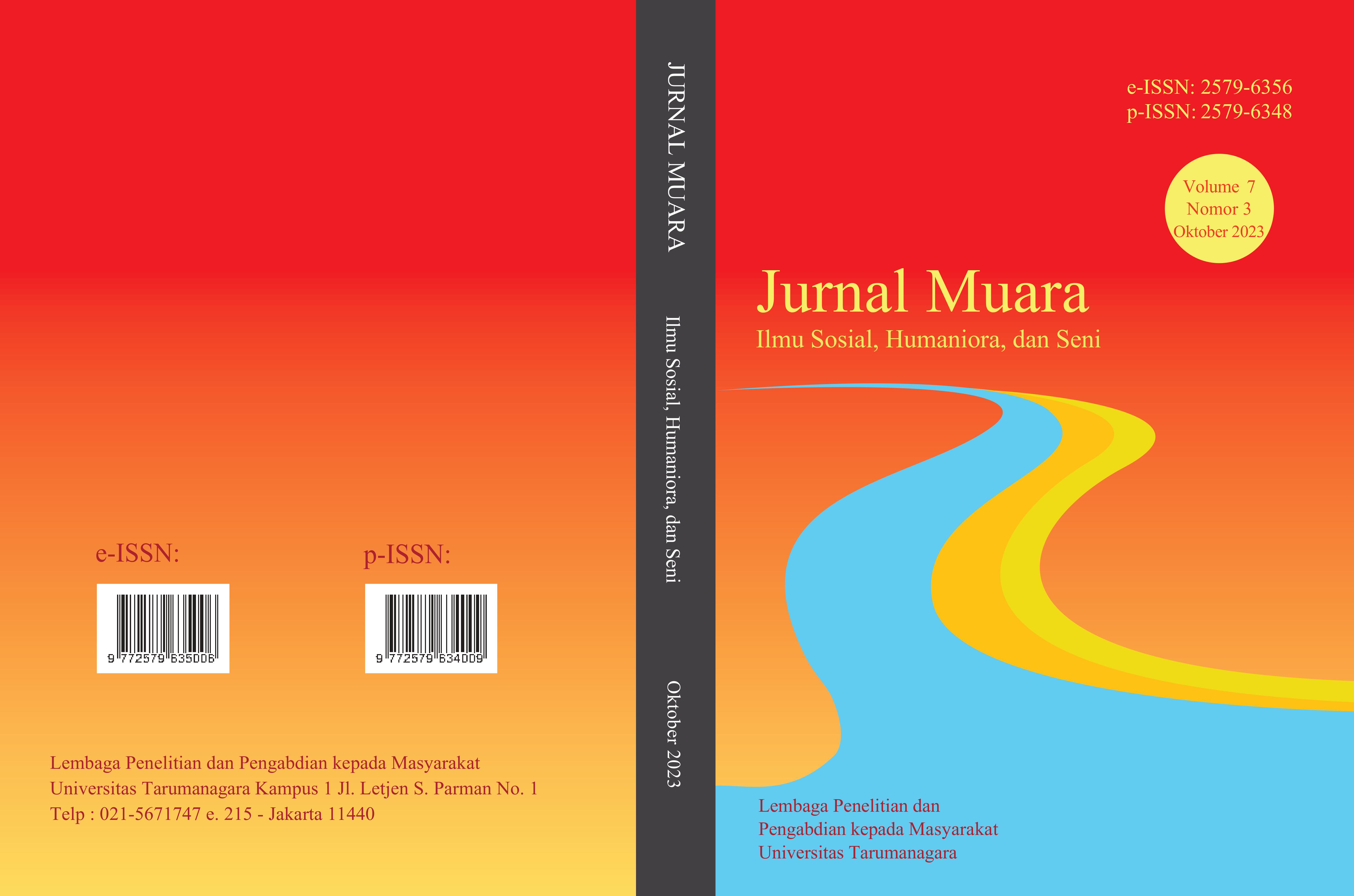PERAN BURNOUT SEBAGAI MEDIATOR PADA HUBUNGAN STRES DIGITAL DENGAN INTENSI KELUAR KERJA
Main Article Content
Abstract
This research is to see whether there is a role of digital stress on the turnover intention if mediated by burnout. Turnover intention is the intention of an employee to quit and leave the company, while digital stres is the pressure experienced by employees because of the increased of ICT systems used because of work system’s change from offline to online during the COVID-19 pandemic. This study was conducted with 115 participants using a non-probability sampling method where only 102 samples could be analysed further. Participants of this research is employees that had experience to the work from home working system and work from office with at least one year experience. This measurement of this research are turnover inten by Jung & Yoon (2013), digital stress scale by Fischer et al. (2021) dan burnout assessment tool (BAT) by Schaufeli et al. (2020. Data analysis was carried out using PROCESS and it was found that the correlation between digital stres and work intensity on employees was not significant, either without burnout or mediated by burnout. . Result of this research is digital stress and work intensity on employees were not significant, either without burnout or mediated by burnout. It because the most influence dimension on turnover intention is mental distance.
Penelitian ini untuk melihat apakah terdapat peranan stres digital terhadap intensi keluar kerja jika dimediasi oleh burnout. Intensi keluar kerja adalah niat seorang karyawan untuk berhenti dan keluar dari perusahaan. Stres digital adalah tekanan yang dialami oleh karyawan sebagai akibat dari penggunaan sistem Teknologi Informasi Komunikasi (TIK) yang meningkat yang disebabkan oleh perubahan sistem kerja dari luring (luar jaringan) menjadi daring (dalam jaringan) selama masa pandemi COVID-19. pada dasarnya semua orang akan meninggalkan pekerjaannya dan tidak akan ada satu orang yang akan tinggal bersama dengan organisasi selamanya, terdapat faktor yang mempengaruhi untuk tetap tinggal atau keluar dari perusahaan sehingga sangatlah penting untuk mengetahui cara mengantisipasinya. Penelitian ini dilakukan dengan jumlah sampel 115 partisipan dengan menggunakan metode pengambilan sampel nonprobability sampling dimana hanya 102 sampel yang dapat dianalisa lebih lanjut. Partisipan pada penelitian ini adalah karyawan yang menjalankan sistem kerja dari rumah maupun kerja dari kantor minimal selama satu tahun. Alat ukur yang digunakan pada penelitian ini adalah turnover inten dari Jung & Yoon (2013), digital stress scale dari Fischer et al. (2021) dan burnout assessment tool (BAT) dari Schaufeli et al. (2020). Analisa data dilakukan dengan menggunakan PROCESS dan didapatkan korelasi antara stres digital dan intensi keluar kerja pada karyawan tidak signifikan, baik tanpa dimediasi oleh burnout ataupun dengan mediasi burnout. Hasil penelitian menemukan, bahwa stres digital terhadap intensi keluar kerja pada karyawan tidak signifikan, baik tanpa dimediasi oleh burnout ataupun dengan mediasi burnout.
Article Details

This work is licensed under a Creative Commons Attribution-NonCommercial-ShareAlike 4.0 International License.
This work is licensed under a Jurnal Muara Ilmu Sosial, Humaniora, dan Seni Creative Commons Attribution-ShareAlike 4.0 International License.References
Bakker, A.B. (2014). The Job Demands–Resources Questionnaire. Rotterdam: Erasmus University
Danudoro, K., Zamralita, & Daniel, L. (2021). The Effect of Job Demands on Burnout with Job Resources as A Moderator Among External Auditors. Advances in Social Science, Education and Humanities Research, 570, 1138–1143.
Hom, P. W., Mitchell, T. R., Lee, T. W., & Griffeth, R. W. (2012). Reviewing employee turnover: Focusing on proximal withdrawal states and an expanded criterion. Psychological Bulletin, 138(5), 831–858. https://doi.org/10.1037/a0027983
Fischer, T., Reuter, M., & Riedl, R. (2021). The Digital Stresors Scale: Development and Validation of a New Survey Instrument to Measure Digital Stres Perceptions in the Workplace Context. Frontiers in Psychology, 12. https://doi.org/10.3389/fpsyg.2021.607598
Jung, H. S., & Yoon, H. H. (2013). Role Stres and Turnover Intent Measure [Database record]. Retrieved from PsycTESTS. doi: https://dx.doi.org/10.1037/t24169-000
Rajendran, N., Watt, H. M. G., & Richardson, P. W. (2020). Teacher burnout and turnover intent. The Australian Educational Researcher, 47(3), 477–500. https://doi.org/10.1007/s13384-019-00371-x
Reinecke, L., Aufenanger, S., Beutel, M. E., Dreier, M., Quiring, O., Stark, B., Wölfling, K., & Müller, K. W. (2016). Digital Stres over the Life Span: The Effects of Communication Load and Internet Multitasking on Perceived Stres and Psychological Health Impairments in a German Probability Sample. Media Psychology, 20(1), 90–115. https://doi.org/10.1080/15213269.2015.1121832
Sklar, M., Ehrhart, M. G., & Aarons, G. A. (2021). COVID-related work changes, burnout, and turnover intentions in mental health providers: A moderated mediation analysis. Psychiatric Rehabilitation Journal, 44(3), 219–228. https://doi.org/10.1037/prj0000480
Schaufeli, W. B., Desart, S., & de Witte, H. (2020). Burnout Assessment Tool (BAT)—Development, Validity, and Reliability. International Journal of Environmental Research and Public Health, 17(24), 9495. https://doi.org/10.3390/ijerph17249495
Lubbadeh, T. (2021). Job Burnout and Counterproductive Work Behaviour of the Jordanian Bank Employees. Organizacija, 54(1), 49–62. https://doi.org/10.2478/orga-2021-0004
Taser, D., Aydin, E., Torgaloz, A. O., & Rofcanin, Y. (2022). An examination of remote e-working and flow experience: The role of technostres and loneliness. Computers in Human Behavior, 127, 107020. https://doi.org/10.1016/j.chb.2021.107020
Wen, B., Zhou, X., Hu, Y., & Zhang, X. (2020). Role Stres and Turnover Intention of Front-Line Hotel Employees: The Roles of Burnout and Service Climate. Frontiers in Psychology, 11. https://doi.org/10.3389/fpsyg.2020.00036



